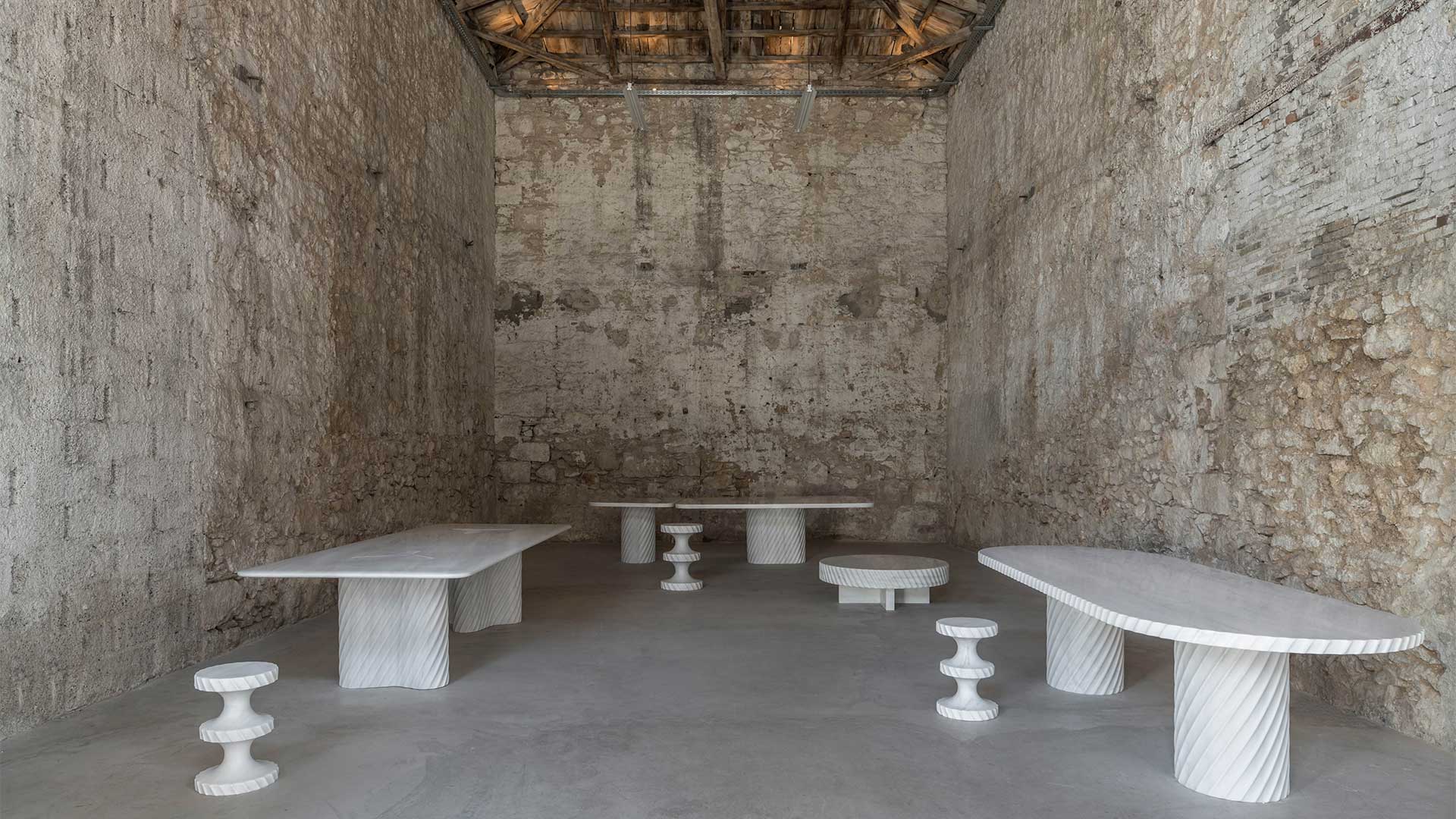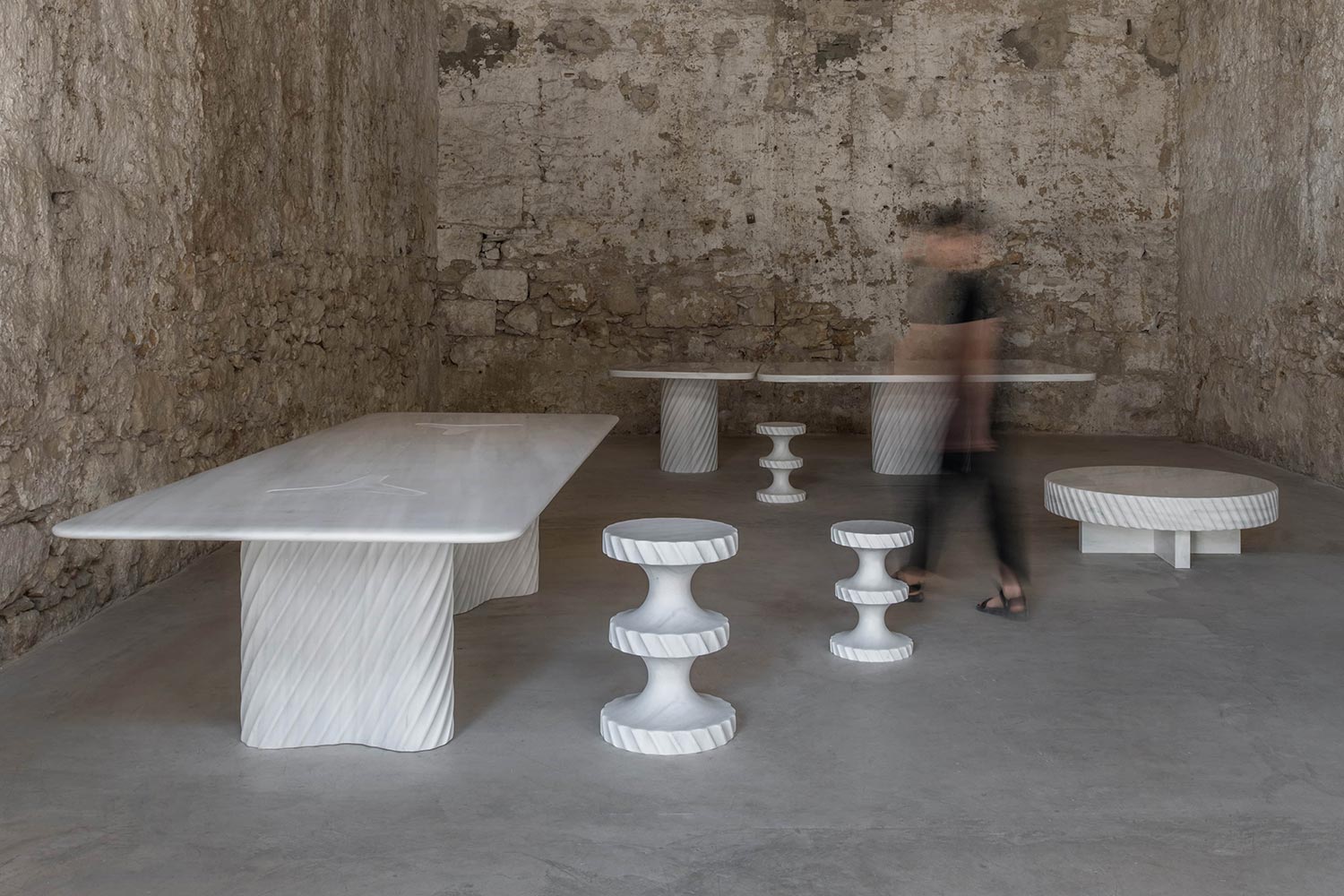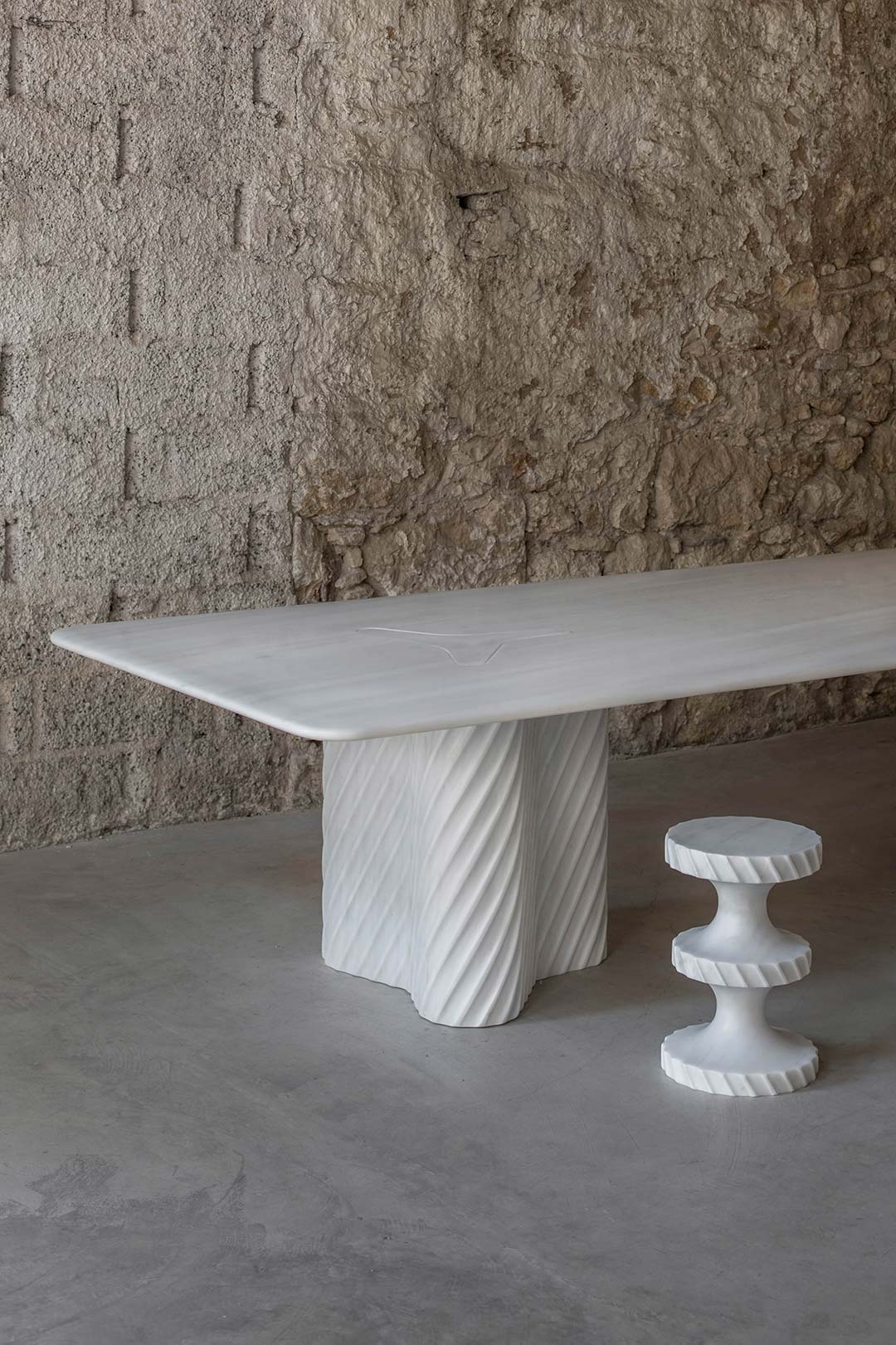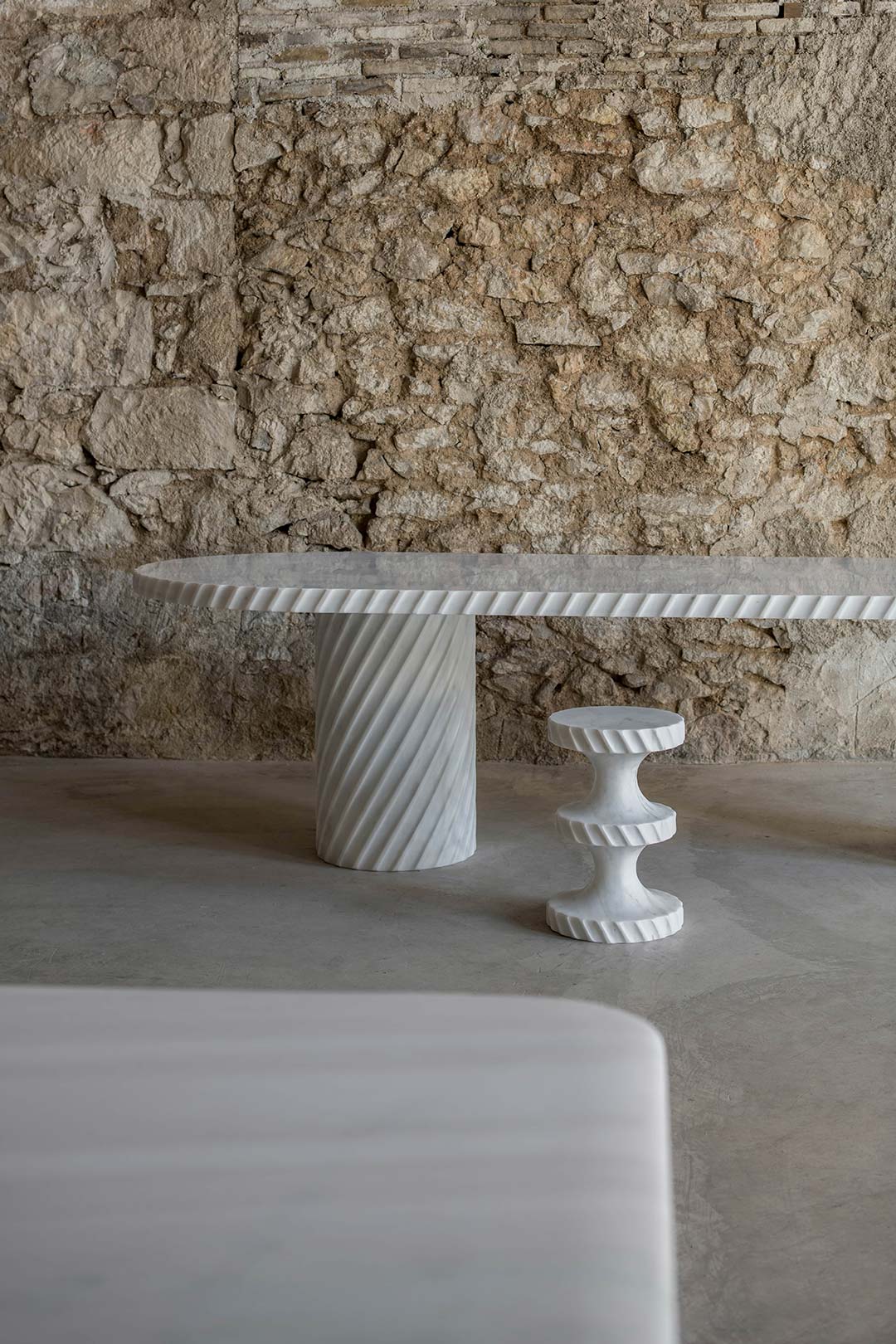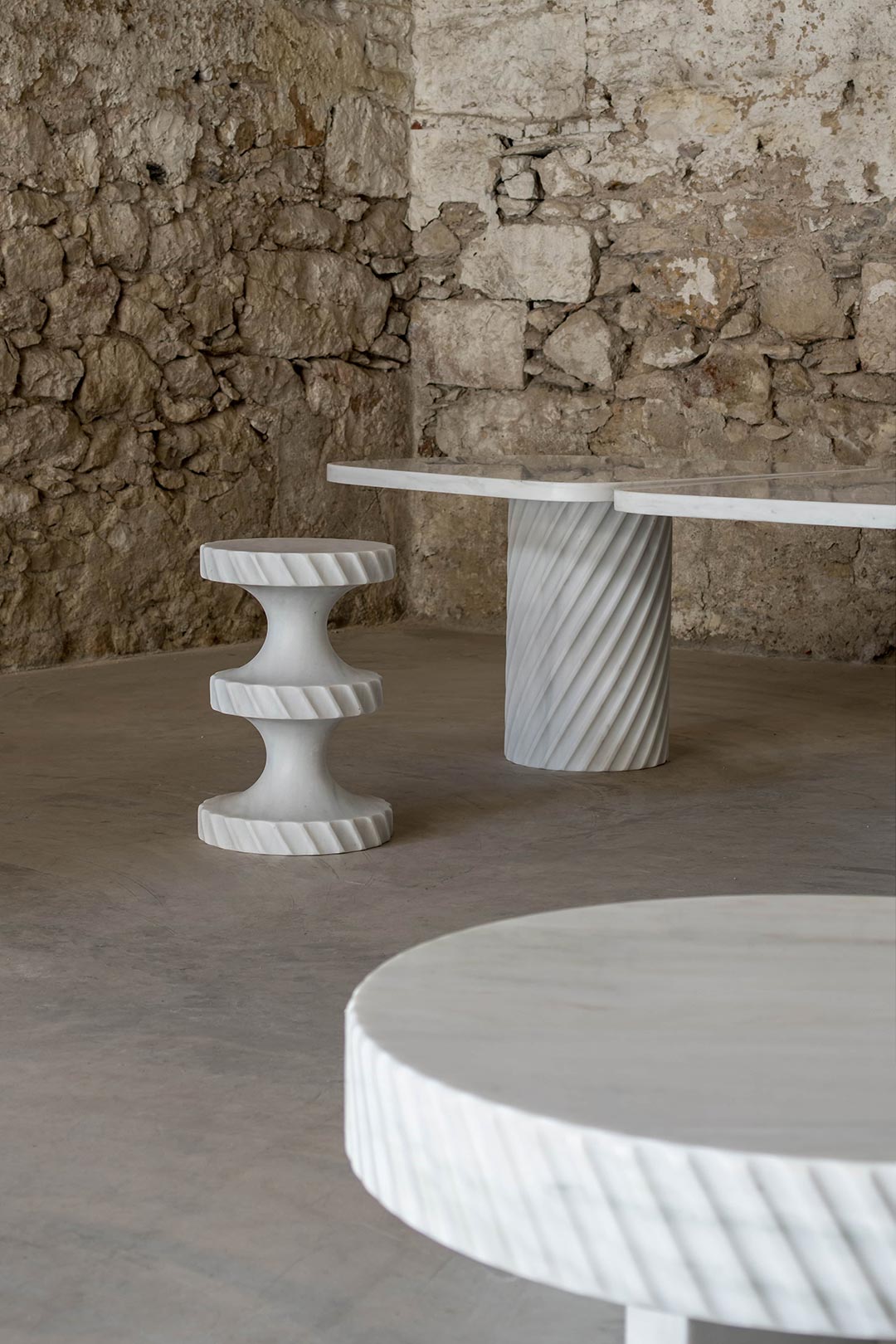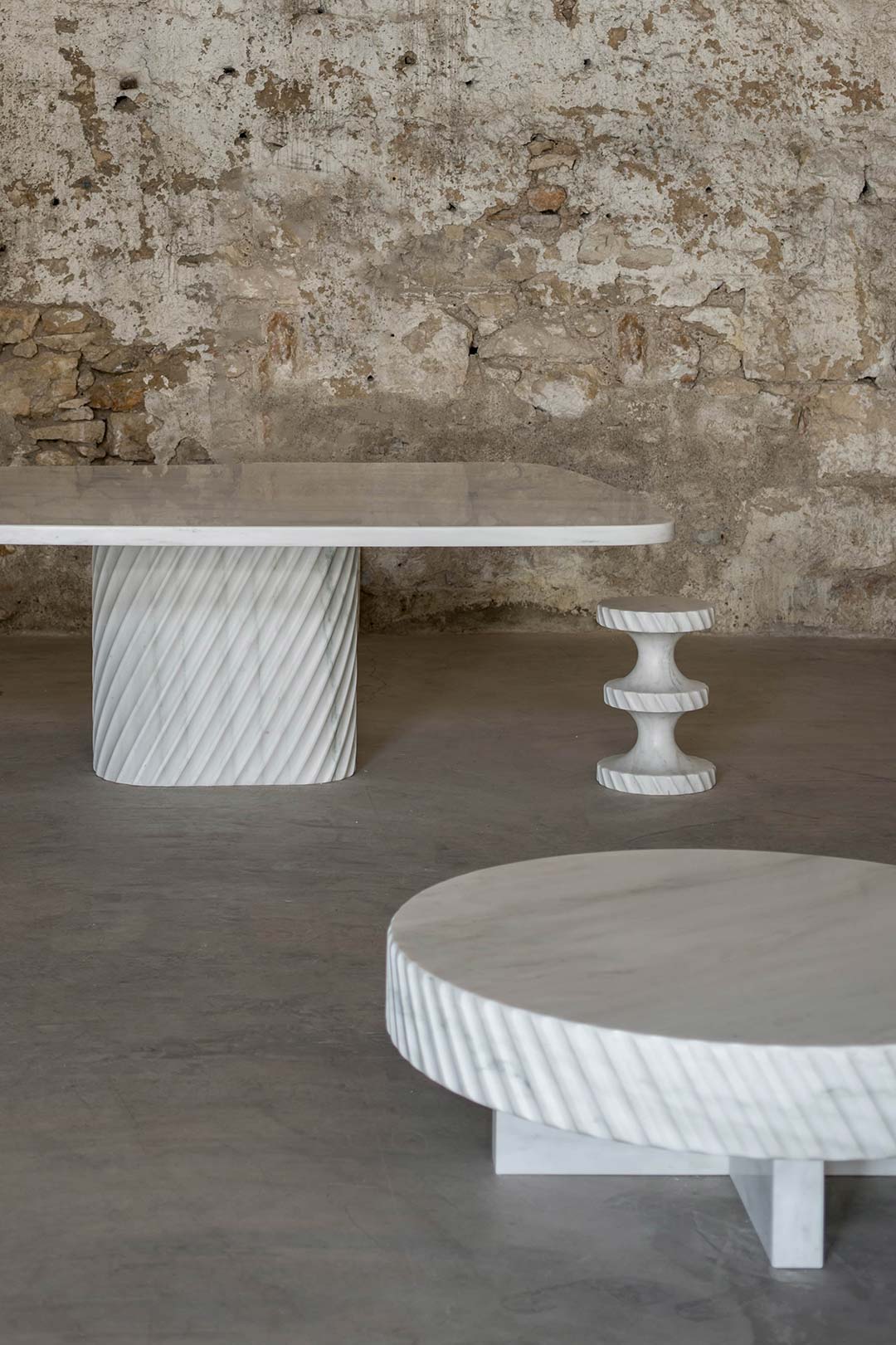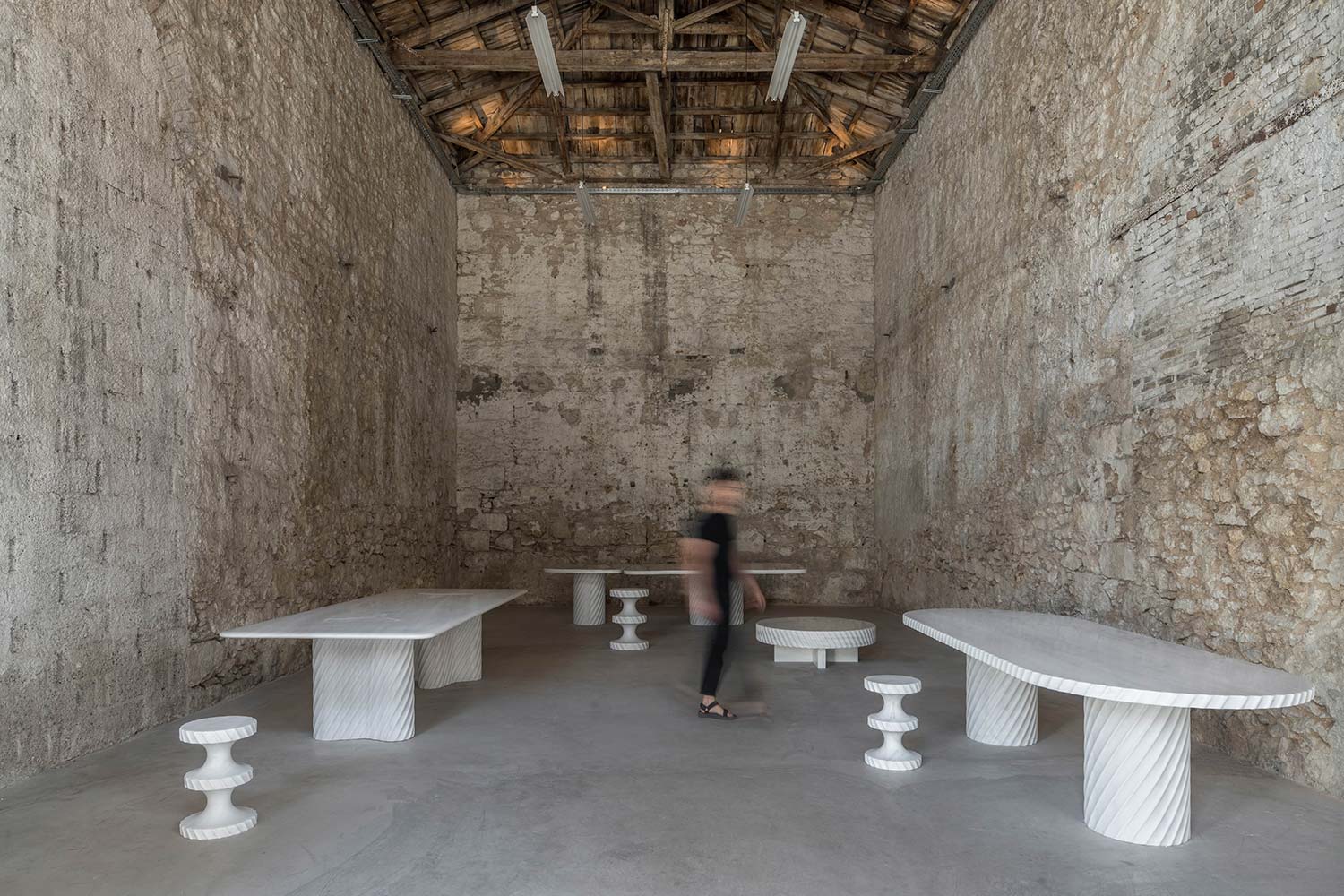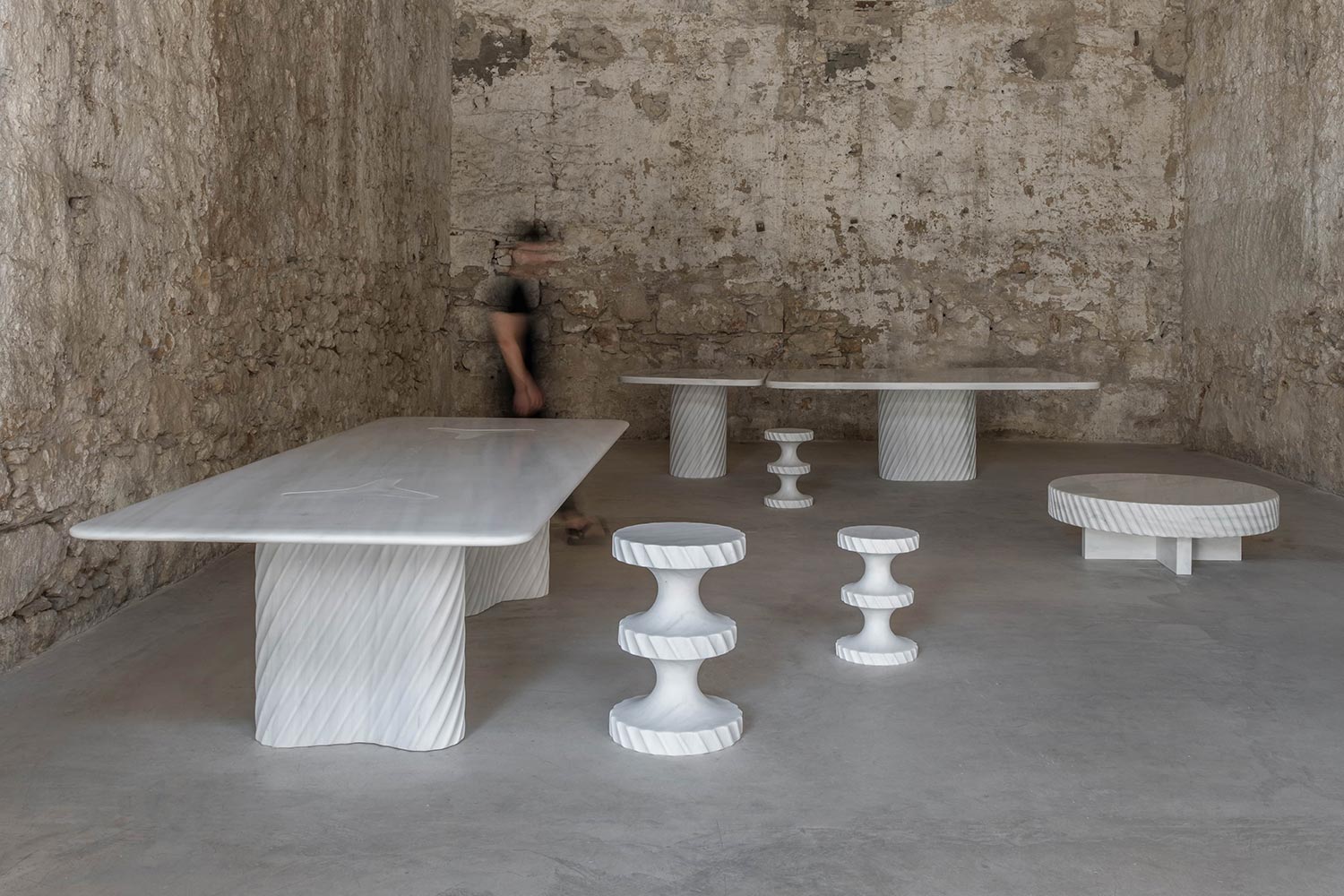A new commission by Carwan Gallery to architect and designer India Mahdavi is an exploration of form in the absence of colour.
Whiteness is one of the identifying marks of classicism — or so we have come to believe. Although museums all over the world are filled with sculptures of pearly white marble, archaeology has revealed that the Ancient Greeks and Romans used to lavishly paint their statues and buildings as a norm. Crimson, ultramarine, yellow, turquoise, and other colours in shocking tones were often used in dazzling geometric patterns and in contrasting combinations. The original effect was indeed a world apart from what the Western eye is accustomed to appreciate as the classical ideal. In essence, the achromia celebrated by European neoclassicism, and which later influenced the dichotomy between Western whiteness and Eastern polychromy, is rooted in a historical oversight.
“A fantastical version of the East”
A prominent figure in contemporary design, Paris-based architect and designer India Mahdavi uses colour widely and innovatively. Her unique polychrome language has become her signature, widely copied across the world, virally published, and critically acclaimed. Whether it’s an iconic pink-hued restaurant in London or a sprout-green tea room, vivid colour schemes are the defining trait of everything she touches.
The Iranian-born designer’s work is notable for referencing disparate cultures and disciplines, thanks to influences gleaned from a nomadic childhood that led her from the Middle East to New England to Europe. She calls herself “a polyglot and a polychrome”, meaning that she uses many different design languages and loves bringing colours together in brave new combinations. Like a scenographer capturing the perfect frame, her passion for film reveals itself in the cinematic qualities of projects spanning the fashion, furniture, retail, and hospitality industries. Yet, it’s her bold tones and patterns that serve as the building blocks of Mahdavi’s kaleidoscopic world — an antidote to the minimal, monochromatic palette so prevalent in contemporary interiors. About colours, India Mahdavi says: “They are the light and shade of all the Souths I originate from, which have become the expression of the nostalgia of a paradise lost and which animate in me the desire to imagine others.”
The designer has barely lived in the Orient, yet she constantly draws inspiration from there. The polychromy of her work is often interpreted along the polarities of the achromatic West and the colourful East, not only by critics, but also by friends. The artist Adel Abdessemed has described Mahdavi’s work as “a fantastical version of the East that doesn’t exist in the East, a sort of dreamed image”. It is, we could say, a new interpretation of the Orient through her eyes, a re-invention of Levantine aesthetics, the re-telling of a whole chapter in the genealogy of Western visual culture that has faded from collective memory.
A series of objects about the absence of colour
The new commission by Carwan Gallery is a reflection on the link between India Mahdavi’s work and the erasure of colour from classical art and architecture. The challenge given to Mahdavi was to reinvent her most iconic objects and translate them into a ‘contemporary error’ of art history by removing colour from them, resulting in achromia — which lends the exhibition its title.
This counter-intuitive gesture generates a new perspective on her work, just like the erroneous colourlessness of Ancient Greek temples and statues changed our perception of how they were meant to be experienced. The appearance of Mahdavi’s objects changes as soon as their colour is taken away, immortalising them in a ‘historic error’ of interpretation. They underline this specific historic negation, meditating — through its absence — on the power of colour, how it conditions our perception of space, and its psychological impact.
Mahdavi’s virtuosity with colour sometimes overshadows her way with form. One of the aspirations of this commission is to also reveal the formal qualities in her work — an exercise that Nicolas Bellavance-Lecompte, Carwan’s founder, almost imposed on the designer over a whole year of negotiations, pushing her towards a completely new avenue of experimentation that is an essay on the significance of colour. In her work in general, Mahdavi’s approach emerges from a constant research of light revealed by her association of colours and textures. As such, the intervention on the objects designed for this series followed the idea of capturing light — as in the way the grooves on a doric column catch the light — emphasising new textures and sculptural details.
The series of objects is composed of signature pieces designed by Mahdavi over the past two decades, ranging from the iconic Bishop series to the Alber and Diagonal tables, executed in marble. This unique new expression of them being colourless unveils each object’s true lines and geometries. All objects are carved in Pentelic marble, a material chosen by sculptors and architects throughout history for its excellent quality and its white colour that has a golden sheen when hit by sunlight. Each object is handmade in Greece, combining advanced digital technology and craftsmanship at Delta Marmara workshops, on the outskirts of Athens.
Read more +
Read less -







 Sign in with email
Sign in with email


